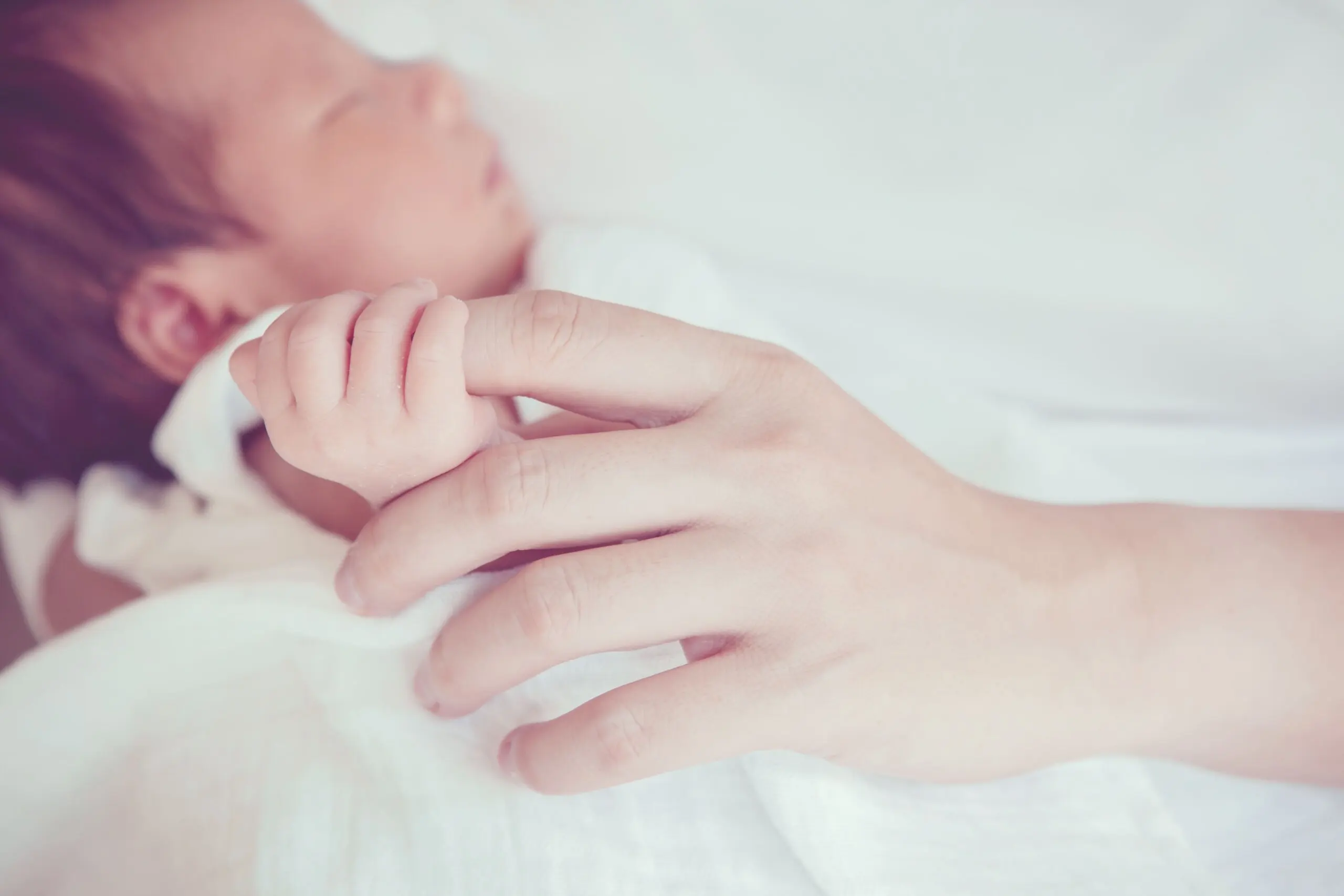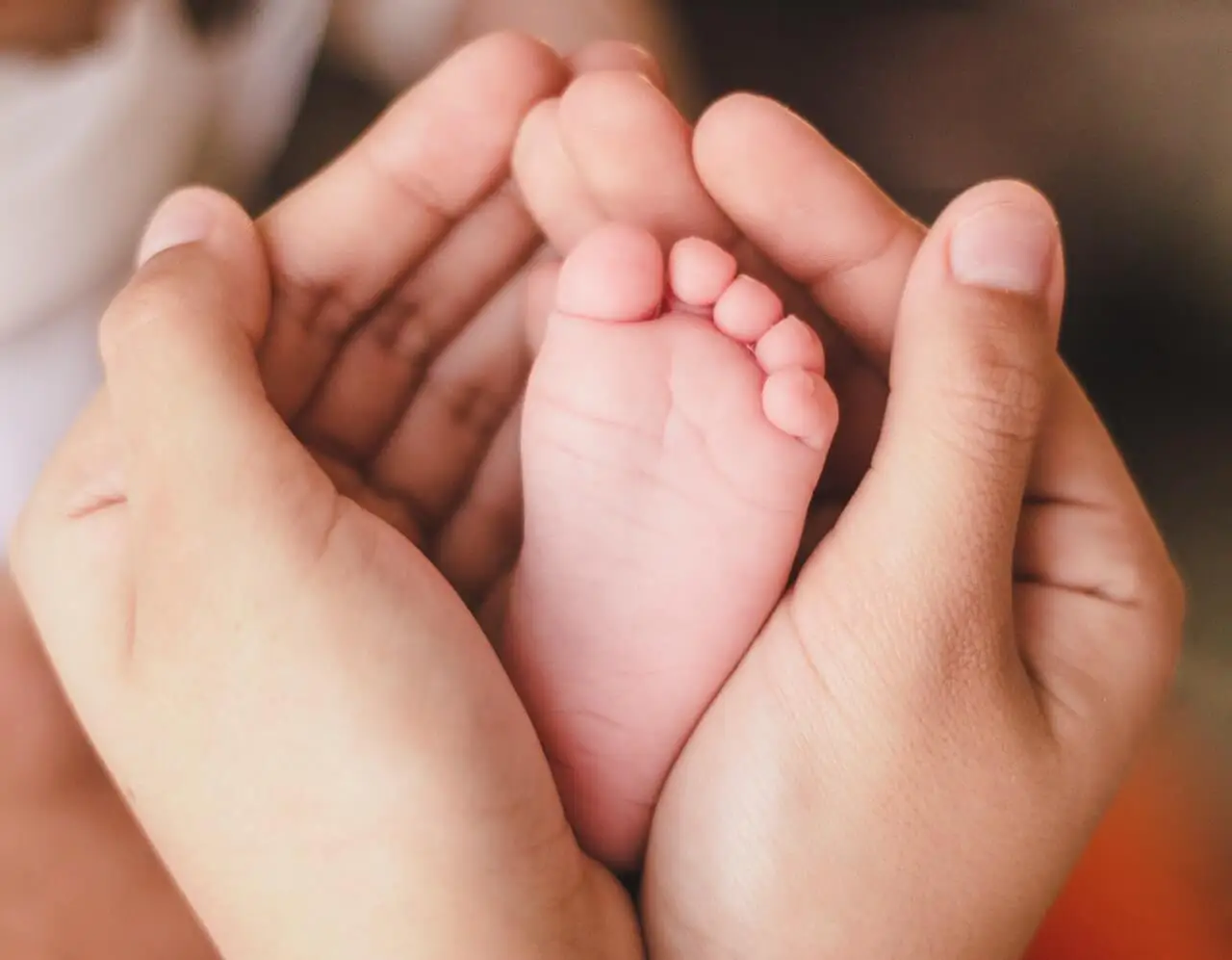What Is the Grasp Reflex in Infants?

The grasp reflex in infants is of two types: palmar (in the hands) or plantar (in the feet). It can be triggered by stimulation in the form of gentle pressure.
The infant will then tend to close their hand or arch their foot. In both cases, the grasp reflex allows the motor response of the upper and lower limbs to be evaluated.
It’s important to note that, when it doesn’t occur, it may be a sign of a possible neurological problem, as both reflexes are regulated by the spinal cord. Let’s look at this in more detail.
Primitive reflexes
Some involuntary motor responses are present in infants. These are developed from before birth, evolve as the child grows, and develop until they disappear naturally.
These movements, called primitive reflexes, are mediated by different structures of the nervous system:
- Spinal cord
- Midbrain
- Brain stem
- Cerebral cortex
Among such motor responses are the following:
- Sucking reflex: This has to do with nutrition and manifests itself in a sucking movement when something touches or rubs against the baby’s mouth.
- Search reflex: This occurs in response to a given stimulus. The infant turns its head from one side to the other. This response tends to disappear at 4 months.
- Moro: If the baby’s head goes backwards, it will extend its arms and legs and then bring them together. This reflex begins to disappear after 2 months.
- Neck tonic: When the baby turns its head, it also stretches the arm on that side and leaves the other one bent. It’s a defense-like movement, similar to what boxers do.
- Automatic gait: If you hold your baby by the arms, letting them support or touch the soles of their feet to a surface, they’ll try to walk by placing one foot in front of the other.
- Labyrinthine tonic: This appears between birth and 2 months of age, and disappears at 4 or 6 months. It’s manifested by a rotation of the head, which will cause the child to extend their arms and legs to the same side.
In addition to those mentioned, there are others such as visual tracking, auditory orienting, and the grasp reflex, which we’ll discuss below.

Read more: 10 Exercises to Stimulate Your Baby’s Gross Motor Skills
What is the grasp reflex?
Grasp reflex refers to the movement or motor response to make contact with an object. It’s either palmar (in the hands) or plantar (in the feet).
To produce this reflex, the newborn baby can be stimulated by exerting gentle pressure. In both cases, the response is similar: the baby makes a closing movement, as if trying to grasp the object.
Palmar grasp reflex
Most of us will have experienced this. When we’ve brought a finger close to a newborn baby or touched their little hands, they grasp us firmly and don’t let go. This is due to the palmar grasp reflex.
This involuntary motor response occurs from birth, as long as neurological development is normal. The palmar grasp reflex is maintained during the first 2 months. It then decreases and usually disappears completely after 5 months of age.
The plantar flexion reflex
In the plantar flexion reflex, the movement is an arching of the toes inward, as if trying to close the limb. In some cases, when stimulated with a pen, they flex in such a way that they even grasp the object.
Due to the manifestation of this reflex, it’s sometimes difficult to put socks or slippers on babies. Even with flexible footwear.
Like the previous point, the plantar grasp reflex is present from birth; however, it remains for a longer period of time, disappearing at approximately 9 or 10 months, coinciding with the child standing for the first time or taking their first steps.
Find out more: Is Walking Barefoot Good or Bad for Children?
Importance of the grasp reflex
These two primary reflexes are thought to have been inherited from our ancestors, when humans had more hair. In this way, babies could cling to their mother’s body when danger was imminent, just as primates do.
Now, along with the others mentioned, the palmar and plantar grasp reflexes are important indicators for the physician when evaluating and diagnosing newborns and infants.
Their presence also helps to confirm that the development of the central nervous system is developing correctly. If the grasp reflex doesn’t appear or disappear at the age it should, it may be a sign of some disorder.
It could affect the development or acquisition of some later skills. If the plantar grasp reflex were to persist, it would be difficult for the infant to begin to walk normally, as he/she wouldn’t be able to place their feet correctly on the ground.
On the other hand, the palmar grasp reflex is important for certain fine or gross motor skills. For example, it’s related to being able to pinch with the fingers when grasping a pencil or a piece of cutlery.

When to go to the doctor?
Different tests are carried out at birth to either rule out or detect certain pathologies. The palmar and plantar grasp reflexes are observed at this stage. They’re indicative of a correct neurological evolution. And, if everything is fine, there’s nothing to worry about in this regard.
However, if over time, any irregular situation is observed in relation to these primitive reflexes (for example, they don’t disappear at the stipulated time), you should go to see your doctor. He or she may recommend certain tests to determine the cause.
All cited sources were thoroughly reviewed by our team to ensure their quality, reliability, currency, and validity. The bibliography of this article was considered reliable and of academic or scientific accuracy.
- Alvarado Ruiz G, Martínez Vázquez I, Solís Chan M, et al. Los reflejos primitivos en el diagnóstico clínico de neonatos y lactantes. Revista de Ciencias Clínicas. 2009; 9(1): 15-26.
- Dos Santos-Trapote S. Integración de los Reflejos Primitivos como génesis del desarrollo motor. La Rioja, Argentina: Universidad Nacional, 2017-
- Gómez-Andrés D, Pulido Valdeolivas I, Fiz Pérez L. Desarrollo neurológico normal del niño. Pediatr Integral. 2015; XIX (9): 640.e1–640.e7.
- Mendoza L. Actividad refleja. Revista Mexicana de Medicina Física y Rehabilitación. 2002; 14: 61-62.
- Rodríguez Bonito R. Manual de neonatología. México DF: McGraw Hill.
This text is provided for informational purposes only and does not replace consultation with a professional. If in doubt, consult your specialist.








